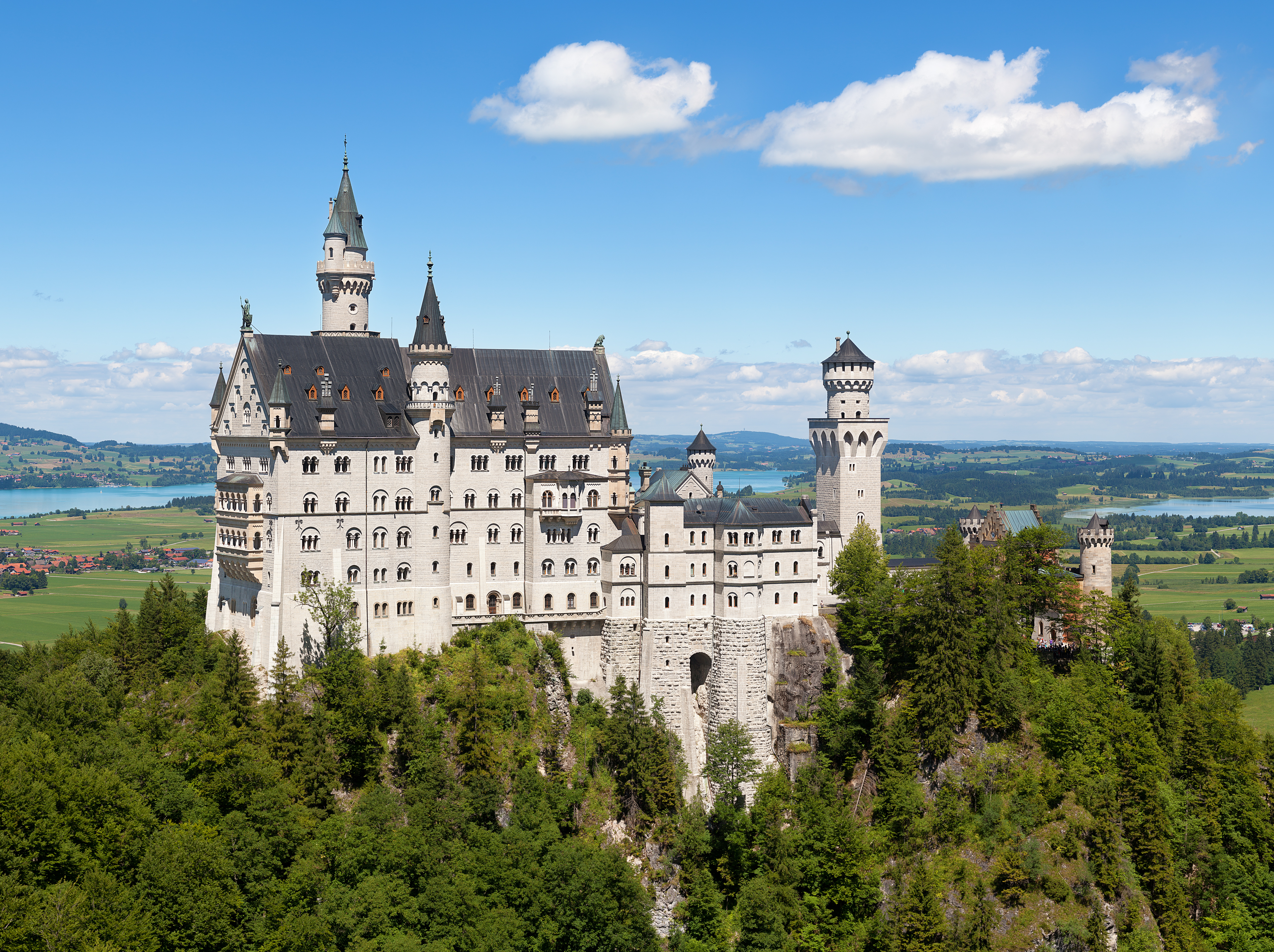Neuschwanstein Castle is a fairy-tale fortress nestled in the Bavarian Alps of Germany. Recognized for its idyllic Romanesque Revival architecture, it famously served as the inspiration for Walt Disney's Sleeping Beauty Castle. The construction of Neuschwanstein began in 1869, commissioned by King Ludwig II of Bavaria as a tribute to Composer Richard Wagner, who was an essential influence on Ludwig. This masterpiece remained unfinished at the King’s death in 1886, with only about a dozen of the intended 200 rooms completed. The castle showcases an artistic homage to medieval legends and a testament to Ludwig's romance with bygone eras.
Culturally, Neuschwanstein symbolizes the pinnacle of romantic art and architecture, drawing millions of tourists each year who admire not just its structural grandeur but also its deeply interwoven tales of legend and Wagnerian opera. It stands as a notable landmark within German history and remains a perpetual embodiment of the nation's 19th-century romanticism.
Located near the village of Hohenschwangau in southwest Bavaria, Neuschwanstein Castle is set against a breathtaking backdrop of rugged mountains and verdant pine forests. The region experiences a generally cool and temperate climate, with substantial snowfall during winter, enhancing its fairy-tale appeal.
Annually, the castle is a part of several cultural events, thanks to its historical allure. While not directly hosting festivals, its surroundings cater to the traditional Bavarian festivities, including the celebration of Ludwig's birthday and other regional events, bringing the walls alive with historical reenactments and music.
Interesting facts about Neuschwanstein include its technologically advanced design for its era, with modern amenities like flushing toilets, running water, and a central heating system. Despite its medieval appearance, it was ironically one of the most modern buildings at its completion. Another trivia is that Neuschwanstein was intended to be a private refuge for Ludwig II, but now ironically stands as one of Germany’s most public attractions.
 Thomas Wolf, www.foto-tw.de, CC BY-SA 3.0 DE, via Wikimedia Commons
Thomas Wolf, www.foto-tw.de, CC BY-SA 3.0 DE, via Wikimedia CommonsGermanyEurope
Nearby Places
Königssee(168 km)
Pristine Alpine lake with echo wall and church.Salzburg(175 km)
Baroque city of Mozart with clifftop fortress, a blend of music, history, and stunning architecture.Bad Gastein(186 km)
Belle Époque spa town built into Alpine gorge with thermal springs, a waterfall cascade, and historic grand hotels.Hallstatt(217 km)
Picturesque lakeside village in the Alps known for its ancient salt mines and enchanting natural scenery.Bergamo(222 km)
Hilltop medieval city with Venetian walls, rich in history, culture, and stunning architecture.Jungfrau(238 km)
Iconic Alpine peak with mountain railway offering panoramic views, rich in cultural history and natural wonders.Heidelberg(256 km)
Romantic city with castle ruins and universityBurano(263 km)
Colorful fishing island in Venice lagoon, famed for vibrant homes and exquisite lace-making traditions.Venice(265 km)
Historic canal city with unique architecture and rich cultural heritage.Log in to write a review.
Sustainable Travel Tips
Plan Mindfully
- Choose direct flights when possible
- Travel during off-peak seasons
- Pack light and bring reusables
- Prefer eco-friendly accommodations
At Your Destination
- Use public transport or walk
- Support local businesses
- Respect wildlife and habitats
- Choose activities with minimal impact
Daily Habits
- Reuse hotel towels
- Take shorter showers
- Turn off lights/AC when out
- Carry a reusable water bottle
